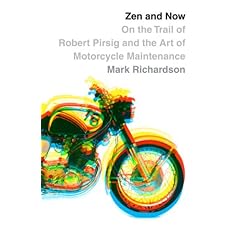
With the advent of a new riding season, I required a replacement for my three and a half year-old
Cortech Solution waterproof road boots. Over the last six months, the waterproofing of the boots has become dubious. The harder the rain, the more water works it's way past the seals. Lately, "hard rain" has become a broad category. Often, I'd climb off the bike at work and squelch my way down the hall to my office, doomed to wander the corridors in wet socks for the day.
To be fair, the Cortech's have seen nearly 50K miles of on-cycle use. If I'm riding, I spend the day in my boots, strolling around the office. While on tour, I hike short trails in them, provided my right ankle can take the strain. The bottoms of the no-slip rubber soles have been worn smooth. Fine white stress lines web the outer leather shells, and the soft, inner material, known as K-315, has degraded to a hard, flat panel, like walking on a piece of balsa wood. Small chunks of K-315 occasionally attach themselves to my socks for a free ride through the house.
Like saying farewell to an old friend, I have a hard time discarding something as comfortable as an aging pair of boots. Seems to me, the longer I utilize a boot, the more hospitable an environment they prove to be for my feet. In fact, the Cortech's haven't made it to the trash yet. Visitors to our house discover them sitting neatly by the door, leaning against the Alpinestar Web Gore-tex boots I purchased to replace them. Why replace them? There are two areas that just seem to make the world a brighter place when they're dry. The first is my testicles, and running a close second, I appreciate toasty lower digits. There's nothing quite like the sensation of water slowly soaking into socks, like milk supersaturating cereal left too long uneaten in the bowl.
When shopping for replacements, several factors play a role in my choice for the next pair. Waterproofing is a must. No squish, squish. While I'm not interested in winning a fashion show by any means, boots with style add a little flair to any motorcyclist's ensemble. Basic black remains a static choice with me. Then there's the practical things to consider. Dry boots mean dry feet which keeps feet healthy, especially between those lower digits I mentioned earlier. Nothing like intolerable athelete's foot to cause problems at 70+ mph. The Alpinestars have hard armor on both sides of the ankle and the shin. The Cortechs do not, which is the main reason influencing my decision, comfortable and reliable though they may be, not to purchase a second pair. I evaluate not only the motorcycle with the dawn of the spring season, but the effectiveness of the gear I use as well.
After shelling out the cash, I slide into my new boots for the ride home and stuff the Cortechs into the saddle bags. I grimace a little as I walk out of the store. The Alpinestars are a little stiff. "Don't worry," the salesmen calls after me, "they'll break in after a while. There's nothing like a pair of Italian leather boots. After a while, they'll be as comfortable as an old pair of tennis shoes."
Oh yes, Italian; I think my new boots and I are going to become old friends.
 Since the ultimate deterioration of my fuel pump at the road's edge several weeks previous, I've experienced the overwhelming urge to begin doing some of the basic work on my bike. In the past, I handled much of the routine maintenance from oil changes to valve adjustments. Due to the amount of riding I've done in the last couple of years, I left much of that in the capable hands of certified mechanics. I no longer have a garage to call my own either, a fact I hope to remedy just as soon as I write that international best-seller. For the time being, my purchase of a rear-wheel stand permits me to perform basic care for my Ninja, chain adjustment and lubrication for instance. The stand makes oil changes less tedious.
Since the ultimate deterioration of my fuel pump at the road's edge several weeks previous, I've experienced the overwhelming urge to begin doing some of the basic work on my bike. In the past, I handled much of the routine maintenance from oil changes to valve adjustments. Due to the amount of riding I've done in the last couple of years, I left much of that in the capable hands of certified mechanics. I no longer have a garage to call my own either, a fact I hope to remedy just as soon as I write that international best-seller. For the time being, my purchase of a rear-wheel stand permits me to perform basic care for my Ninja, chain adjustment and lubrication for instance. The stand makes oil changes less tedious.



































